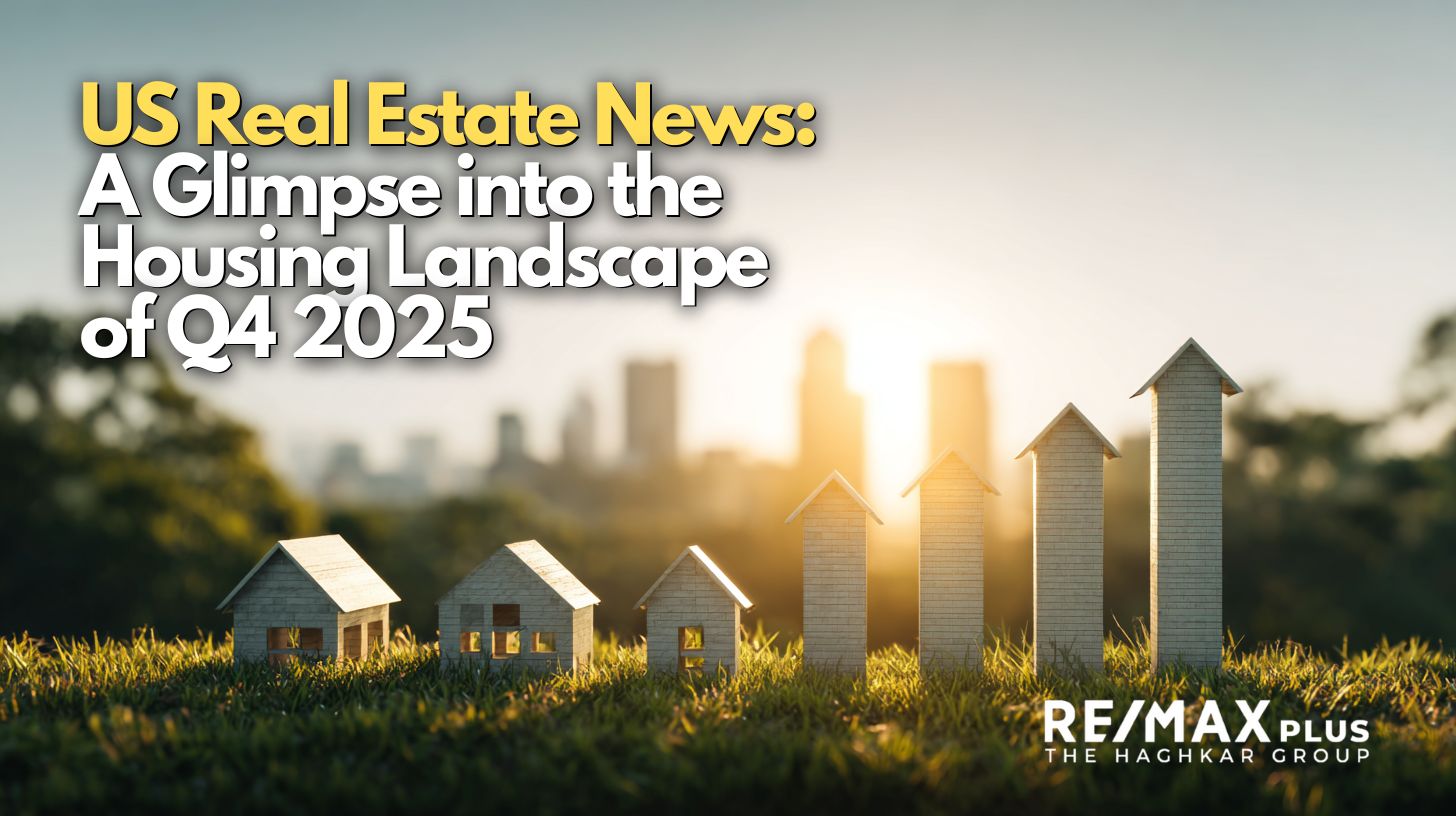
09 Oct US Real Estate News: A Glimpse into the Housing Landscape of Q4 2025
US Real Estate News: A Glimpse into the Housing Landscape of 2025
Estimated Reading Time: 6 minutes
Key Takeaways
- Home price appreciation remains subdued nationally, below 3% in 2025.
- Inventory levels have surged by 20.9% year-over-year, but still lag behind pre-pandemic levels.
- Mortgage rates are high, impacting affordability and buyer demand.
- Regional disparities influence market dynamics significantly across the US.
Table of Contents
- Key National Trends
- Regional Variations
- Buyer and Seller Behavior
- Policy and Economic Context
- Commercial Real Estate
- Emerging Trends
- Final Thoughts
Key National Trends
Navigating the current US real estate market reveals some critical national trends. Home sales and price appreciations have not been racing ahead. Major market sources, including JPMorgan, Realtor, and Zillow, highlight a restrained home price appreciation below 3% in 2025, with many measures hovering around a flat rate nationally. This translates to a largely “frozen” market with demand near multidecade lows, signaling that the buzz seen in previous years hasn’t resumed its sprint.
Despite this stagnation in activity, there’s been a noticeable rise in inventory. An impressive 20.9% year-over-year leap in active home listings as of August 2025 offers a silver lining for prospective buyers seeking more choices in their journey towards homeownership (Realtor). Yet, even with continued increments for 22 months straight, the inventory supply is still 14% beneath pre-pandemic thresholds (JPMorgan & Realtor).
Further complicating the market are longer selling times with homes lingering on the market for approximately 60 days — a week more than the previous year and beyond pre-pandemic norms (Realtor). This discomfort is further expressed by a 57% hike in delistings as sellers grapple with affordability boundaries and lackluster buying demand (Realtor).
The storyline also paints a picture of steady prices with the median list price persistently at $429,990 without year-over-year growth (Realtor). Zillow notes a national average home value of $363,505, barely 0.2% higher than last year, reinforcing the tepid growth narrative (Zillow).
Adding fuel to the complexity fire is the fact that mortgage rates remain stratospherically high, with the average 30-year fixed mortgage rate fluctuating between 6.34% and 6.83% (CBS News, ABC News, Realtor News). This elevation restricts affordability, an undeniable challenge for those seeking to plant roots in their dream homes. For more insights on how rising mortgage rates impact your selling strategy, check out our Selling Amid Rising Mortgage Rates guide.
Regional Variations
As we shift focus to regional disparities, the narrative gains color. The South and West regions are witnessing larger inventory swells alongside more frequent price cuts. Many metros here have transitioned into “buyer’s markets” (characterized by over six months of supply), though some remain tilted toward sellers (Realtor).
Contrastingly, the Northeast and Midwest carry tighter supplies with less price volatility but are also rebalancing gradually (Realtor). Noteworthy metro-level discrepancies exist, with 7 out of the 50 largest metros tilting decisively towards buyers, 23 maintaining a balanced stand, and 20 districts still favoring sellers (Realtor).
Buyer and Seller Behavior
Buyer and seller behavior continues to evolve with the market pressures. Investors are ramping up their purchase activity, as potential owner-occupant buyers find themselves priced out due to high financing rates and house prices (CBS News). For beginners looking to navigate the home buying process, our Home Buying 101 guide offers comprehensive insights.
Existing homeowners, cushioned by accumulated equity, are in wholesome financial positions (JPMorgan). However, aspiring buyers, especially first-timers, find hurdles in the form of high prices and rates, complicating their quest despite emerging choices (Realtor).
Policy and Economic Context
Policy continues to play a substantial role in shaping the real estate landscape. Anticipation hinges on the Federal Reserve’s decision to lower interest rates multiple times in response to weaker job growth, potentially influencing housing affordability and mortgage rates as the year progresses (Realtor News). For a deeper understanding of how interest rates affect the market, refer to our Interest Rates, Its Impact On the Market article.
Changes proposed by the 2025 Trump Administration, such as tightening immigration to ease housing costs, have raised eyebrows. Critics caution that this act may hinder the availability of construction labor, exacerbating affordability challenges by curbing new home supply (JPMorgan).
Queuing the affordability crisis, the Treasury Secretary suggests that considerations for emergency measures might arise, targeting the persisting affordability obstacles (Realtor News).
Commercial Real Estate
Broadening the lens, the commercial real estate sector reveals a divergence trend, especially within the office market. Prime properties enjoy considerably lower vacancy rates than their non-prime counterparts, a gap anticipated to widen further (CBRE). Other commercial segments like office and retail settings remain troubled, whereas the industrial and logistics sectors boast robustness.
Emerging Trends
As the year advances, the emergence of a balanced market at the national level is seen as an encouraging sign — a five-month supply that implies equilibrium (Realtor). However, significant differences surface across cities and regions alike.
Homeowners, with wariness over affordability, hold off on listing. The elevated delistings reflect sellers pausing until the emergence of more favorable conditions (Realtor).
Furthermore, regions, particularly South Florida, witness soaring safety costs. Older condo owners bear hefty special assessment fees linked to intensified safety regulations after high-profile structural failures (CBS News).
To stay ahead of emerging market trends, explore our Top 10 Real Estate Trends You Need to Watch in 2025 for comprehensive insights.
Final Thoughts
The US real estate market in 2025 paints a vivid picture overwhelmed with cautious optimism. High mortgage rates and affordability challenges keep the landscape from full bloom, yet the increase in inventory and potential policy shifts hold promise for prospective buyers awaiting a balanced resurgence. Both new buyers and seasoned homeowners navigate this terrain, compelling the question of whether patience will yield them newfound opportunities in favorable timing.
As you mull over this symphony of market dynamics, the role of expert guidance becomes paramount. Our real estate experts at RE/MAX Plus are poised to help you decode this complex environment and explore the pathways to achieving your real estate objectives—whether it’s finding your dream home or gathering insight into the next investment opportunity.
Do you want a FREE Market Analysis for your area?
Schedule a time today!
}

